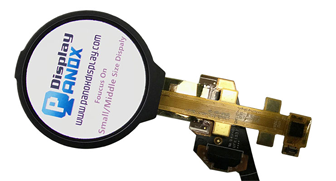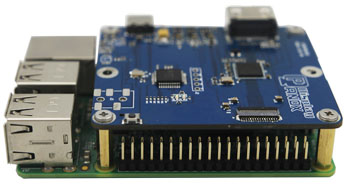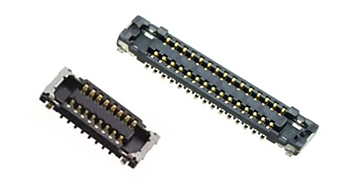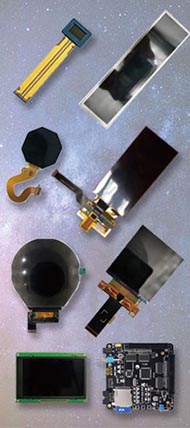An edge emitting laser is a semiconductor laser where light is emitted from the edge of the chip, propagating parallel to the wafer surface. Known for high output power and efficiency, it features a waveguide structure that confines carriers and photons, enabling applications in telecommunications, sensing, and industrial systems. Its beam quality and power scalability make it a cornerstone of modern photonics.
What is an edge emitting laser and how does it operate?
An edge emitting laser (EEL) is a type of semiconductor laser diode where the laser light is emitted laterally from the cleaved edge of the semiconductor chip, traveling along the plane of the wafer. The laser cavity is formed by the natural, flat facets created by cleaving the semiconductor crystal, which act as mirrors to provide optical feedback.
The device typically uses a double heterostructure design, where a thin active region with a smaller bandgap is sandwiched between wider bandgap cladding layers. This structure confines both the charge carriers (electrons and holes) and the optical field, improving the efficiency of stimulated emission. When electrically pumped, carriers recombine in the active region, generating photons that bounce between the cleaved facets, amplifying light at a specific wavelength until lasing occurs.
How does the structure of an edge emitting laser influence its performance?
The waveguide structure and cavity length critically affect an edge emitting laser’s output power, beam quality, and efficiency. The double heterostructure confines carriers and photons to a narrow region, lowering the threshold current and increasing efficiency.
Key structural factors include:
-
Waveguide width: Narrow waveguides produce high beam quality with single transverse mode operation but limit output power to hundreds of milliwatts. Broader waveguides (broad-area lasers) increase power to tens of watts or more but degrade beam quality due to multi-mode operation.
-
Cavity length: Typical lengths range from a few hundred micrometers to several millimeters, balancing gain and resonator losses.
-
Facet reflectivity: Cleaved facets provide about 30% reflectivity, which can be enhanced or reduced by coatings to optimize laser performance.
| Parameter | Effect on Laser Performance |
|---|---|
| Waveguide Width | Narrow: high beam quality, low power; Broad: high power, low beam quality |
| Cavity Length | Longer: higher gain, lower threshold |
| Facet Reflectivity | Controls feedback, output power, and threshold |
Why is beam quality a challenge for edge emitting lasers?
Edge emitting lasers typically emit an elliptical beam with high divergence and astigmatism due to the rectangular waveguide geometry and the difference in confinement along the two transverse axes. This asymmetric beam profile complicates coupling into optical fibers and other photonic components.
To address this, beam shaping optics such as cylindrical lenses or micro-lens arrays are often required. Additionally, advanced designs like tapered waveguides or external cavity configurations improve beam quality but add complexity and cost.
How is output power scaled in edge emitting lasers?
Output power scaling in edge emitting lasers faces physical and thermal limits:
-
Thermal management: Waste heat accumulation in the active region limits power because excessive heat degrades performance and can damage the device.
-
Optical damage: High power densities at the facets can cause damage, restricting maximum power.
-
Mode control: Increasing the waveguide width to boost power often leads to multi-mode operation, reducing beam quality and uniformity.
To overcome these limits, manufacturers use:
-
Broad-area lasers: Wider waveguides produce higher power but require beam shaping.
-
Laser diode arrays (LDAs): Multiple laser emitters integrated on a single chip, optically isolated to prevent interference, combine to deliver very high output power.
-
Advanced cooling and packaging: Efficient heat sinks and thermal designs maintain stable operation.
What are the typical applications of edge emitting lasers?
Edge emitting lasers are widely used across industries due to their high power and efficiency:
-
Telecommunications: As sources for fiber optic communication systems.
-
Industrial processing: Cutting, welding, and marking applications.
-
Sensing and measurement: Gas detection, spectroscopy, and LIDAR.
-
Medical devices: Surgical lasers and diagnostic instruments.
-
Consumer electronics: Optical storage and printing.
Panox Display integrates edge emitting laser technology with their custom display and sensing solutions, enabling clients in automotive, military, and VR sectors to leverage high-performance photonics.
How do edge emitting lasers compare to surface emitting lasers?
| Feature | Edge Emitting Laser (EEL) | Surface Emitting Laser (VCSEL) |
|---|---|---|
| Light Emission Direction | Parallel to wafer surface (edge) | Perpendicular to wafer surface |
| Output Power | High (up to 100+ watts) | Moderate (typically < 10 watts) |
| Beam Quality | Elliptical, astigmatic, needs shaping | Circular, symmetric, easier coupling |
| Fabrication Complexity | More complex facet processing | Easier wafer-level testing |
| Applications | Telecom, industrial, sensing | Data communication, short-range sensing |
Edge emitting lasers excel in high-power applications but require more complex packaging and beam shaping compared to surface emitting lasers.
How does Panox Display incorporate edge emitting lasers in their products?
Panox Display leverages edge emitting laser technology to develop advanced optoelectronic modules and custom display systems. By integrating high-power edge emitting lasers with OLED and LCD displays, Panox Display supports applications requiring precise optical sources, such as:
-
High-speed optical communication modules.
-
Industrial sensors with laser excitation.
-
Automotive LiDAR and detection systems.
Panox Display’s expertise in sourcing premium-grade components and providing OEM customization ensures clients receive reliable, scalable solutions featuring edge emitting lasers.
What are the challenges in manufacturing edge emitting lasers and how are they addressed?
Manufacturing edge emitting lasers involves several challenges:
-
Facet preparation: Cleaving the semiconductor wafer to create high-quality, flat facets with precise reflectivity is critical.
-
Thermal management: Efficient heat dissipation designs prevent performance degradation.
-
Mode control: Avoiding multi-mode operation while scaling power requires precise waveguide engineering.
-
Reliability: Preventing optical damage and ensuring long device lifetimes under high power.
Manufacturers use advanced epitaxial growth, lithography, and coating techniques, combined with rigorous testing and packaging innovations. Panox Display partners with leading manufacturers to ensure these quality standards in their integrated products.
When did edge emitting lasers become prominent and how have they evolved?
Edge emitting lasers were among the first semiconductor lasers developed, dating back to the 1960s and 1970s. Early devices had high threshold currents and poor efficiency. The introduction of the double heterostructure in the 1970s dramatically improved carrier confinement and efficiency, enabling practical devices.
Since then, advances in quantum well active regions, waveguide design, and thermal management have pushed output powers from milliwatts to tens or hundreds of watts. The development of laser diode arrays further expanded power capabilities. Today, edge emitting lasers remain a foundational technology in photonics, continuously evolving with new materials and fabrication methods.
Can edge emitting lasers be customized for specific applications?
Yes, edge emitting lasers can be tailored in terms of wavelength, output power, beam shape, and packaging to meet diverse application needs. Panox Display offers OEM and custom solutions that integrate edge emitting lasers with display modules, controller boards, and touch panels, supporting startups and established companies alike.
Customization options include:
-
Wavelength selection from visible to near-infrared.
-
Power scaling via single emitters or arrays.
-
Integration with optical components for beam shaping.
-
Thermal and electrical packaging for harsh environments.
This flexibility makes edge emitting lasers a versatile choice for cutting-edge photonic systems.
Panox Display Expert Views
“Edge emitting lasers are critical enablers of high-power and high-speed photonic applications. At Panox Display, we emphasize the seamless integration of these lasers with our custom OLED and LCD display solutions to empower clients across telecommunications, industrial sensing, and automotive sectors. Our commitment to quality sourcing and tailored OEM services ensures that every product leveraging edge emitting laser technology delivers exceptional performance and reliability in demanding environments.”
Conclusion
Edge emitting lasers remain a cornerstone of semiconductor laser technology, prized for their high output power, efficiency, and adaptability. Their lateral emission design, combined with double heterostructure waveguides, enables applications from telecom to industrial processing. Challenges like beam quality and thermal management are met with advanced engineering and array technologies. Panox Display’s expertise in integrating edge emitting lasers with custom display and sensing solutions positions them as a key partner for companies seeking reliable, high-performance photonic components. Understanding the fundamentals and capabilities of edge emitting lasers is essential for engineers and innovators driving the future of optical technologies.
Frequently Asked Questions
What distinguishes an edge emitting laser from other semiconductor lasers?
It emits light from the chip’s edge, with light propagating parallel to the wafer surface, unlike surface emitting lasers that emit perpendicularly.
Why does the beam from an edge emitting laser have an elliptical shape?
Due to the rectangular waveguide geometry and differing confinement in vertical and lateral directions, resulting in astigmatism and high divergence.
Can edge emitting lasers achieve very high output powers?
Yes, through broad-area designs and laser diode arrays, output powers can reach tens or even hundreds of watts.
How does Panox Display support customers using edge emitting lasers?
Panox Display provides premium components, custom integration, and OEM services combining edge emitting lasers with advanced displays and control electronics.
Are edge emitting lasers suitable for fiber optic communications?
Absolutely, their high power and efficiency make them ideal for long-distance and high-speed fiber optic links.
















